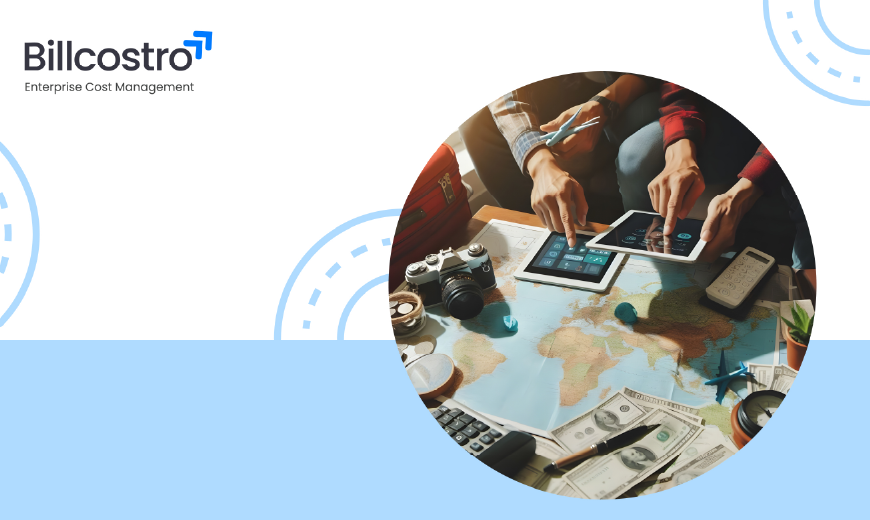
June 30, 2025, 9:43 a.m.

In a business environment geared towards growth, controlling costs while extending operations is undoubtedly the most challenging balancing act for any company. If spending is not controlled in procurement, travel, and employee expenses, it can silently consume budgets, reduce agility, and affect profitability. That is why companies with an eye on the future are turning to smarter procurement, travel and expense automation, and scalable expense management strategies to manage their growth without losing control.
This blog will discuss the best practices that enable organisations to make their procurement and travel processes more efficient, improve visibility into employee expenses, and keep their financial discipline intact, even at large scales.
This blog will discuss the best practices that enable organisations to make their procurement and travel processes more efficient, improve visibility into employee expenses, and keep their financial discipline intact, even at large scales.
When companies are growing, they often fall into the trap of informal procurement and manual expense management. Even if this kind of expense management may have worked for a startup with 5 to 10 employees, it doesn’t take much time to become completely ineffective when the number of employees increases.
Typical problems are:
Absence of central procurement policies
Informal vendor engagement without contracts
Employees booking travel outside approved tools
Waiting for too long for approvals and reimbursements
Unreliable information about real-time spending
However, these challenges aren’t only about operations—they also impact strategic decisions, relations with vendors, employee satisfaction, and business growth..
For a business to expand successfully, it must create strong systems capable of changing according to its needs. A more informed purchasing and adaptable expense management strategy guarantees:
Every rupee that is spent is not only necessary but also traceable
Without unnecessary bureaucracy, teams receive the necessary tools and support
Finance teams are provided with real-time visibility and control
Instead of being manual, policy enforcement becomes automatic
Operations won’t be disrupted at the time of approvals and reimbursements
Your systems should be easy to use and provide security whether it is a task of approving vendor contracts, handling travel requests, or dealing with IT equipment purchase.
Procurement has tranformed from a back-office function to a strategic lever that can influence cost savings, compliance, and efficiency.
Develop a shared database of all vendors that have been approved. Digitally store key documents (GSTIN, TIN, PAN, contracts) and connect them to transactions. This not only builds transparency but also ensures that only vendors that have been verified are engaged.
Even the tiniest of purchases should be preceded by a formal request. Employ workflow tools to distribute these among the relevant approvers, so that budget checks and category rules are applied automatically.
Do not pay the entire amount in advance. Rather, connect payments to targets like delivery confirmation or service completion. This enhances vendor accountability and can be regarded as a form of risk reduction.
Give each function or department a budget and monitor the consumption in real-time. Let teams know when they are close to the limits; thus, they can prevent overrun of the budget at the last minute.
Corporate travel management is where policy leaks and hidden costs are common issues. A smarter approach that not only balances employee convenience but also cost control is a great idea.
Before making reservations, get employees to submit travel requests. The requests should state the purpose, estimated costs, and mode of transportation—route approvals based on policy rules (e.g., travel class, destination, duration).
Make bookings more efficient by using travel partners or portals that have been selected. This is to ensure the negotiated rates are accessible and ease the consolidation of expenditure data.
State the maximums for travel class, accommodation, per diem, and meter documentation. For instance, only train or economy class air travel is allowed for domestic trips under 500 km.
Employees can submit their bills to their phones and track live, which is convenient for them and easy for the system to handle.
Manual expense claims and spreadsheets are not scalable. As organisations grow, finance teams need travel and expense automation tools to maintain accuracy and efficiency.
Let employees submit expense claims through a self-service portal or mobile app. Auto-validate receipts using OCR and flag mismatches instantly.
Define and enforce spending limits across categories like meals, cabs, accommodation, and client entertainment. Alerts can be triggered if claims exceed preset thresholds.
Once approved, reimbursements should be processed within a defined timeline (e.g., 3–5 business days). Automated approvals reduce bottlenecks and improve employee satisfaction.
Seamless integration with accounting software ensures that claims are booked correctly and audits are smooth. This eliminates double entries and reduces reconciliation time.
Manual processes break down at scale. That’s why the most successful companies use integrated platforms to manage procurement, travel, and expenses from a single dashboard.
Policy-based approval routing
These platforms help you shift from reactive cost management to proactive cost control.
One such platform that empowers growing companies with smarter finance operations is Billcostro.
Billcostro is a unified platform that helps finance and operations teams implement procurement, travel, and expense management seamlessly. Automated workflows, milestone-based payments, and a real-time dashboard are some of the features that help companies scale smarter without losing financial control.
With Billcostro, you can:
There is a direct correlation between the size of your enterprise and the complexity of managing spending. Your procurement, travel, and expense processes will have to change to keep up with your growth; otherwise, you will end up with inefficiencies and cost leakages, which can lead to the loss of progress.
Moreover, following these best practices and implementing appropriate technology will enable you not only to optimise your processes but also to support teams, boost compliance, and open up the strategic value.
Procurement that is more intelligent, scalable expense management, and automated travel workflows are no longer just the latest operational upgrades—they are the base of sustainable and profitable growth.
Start your 30-day test run with Billcostro and transform the way your business handles procurement, travel, and expenses - Click here